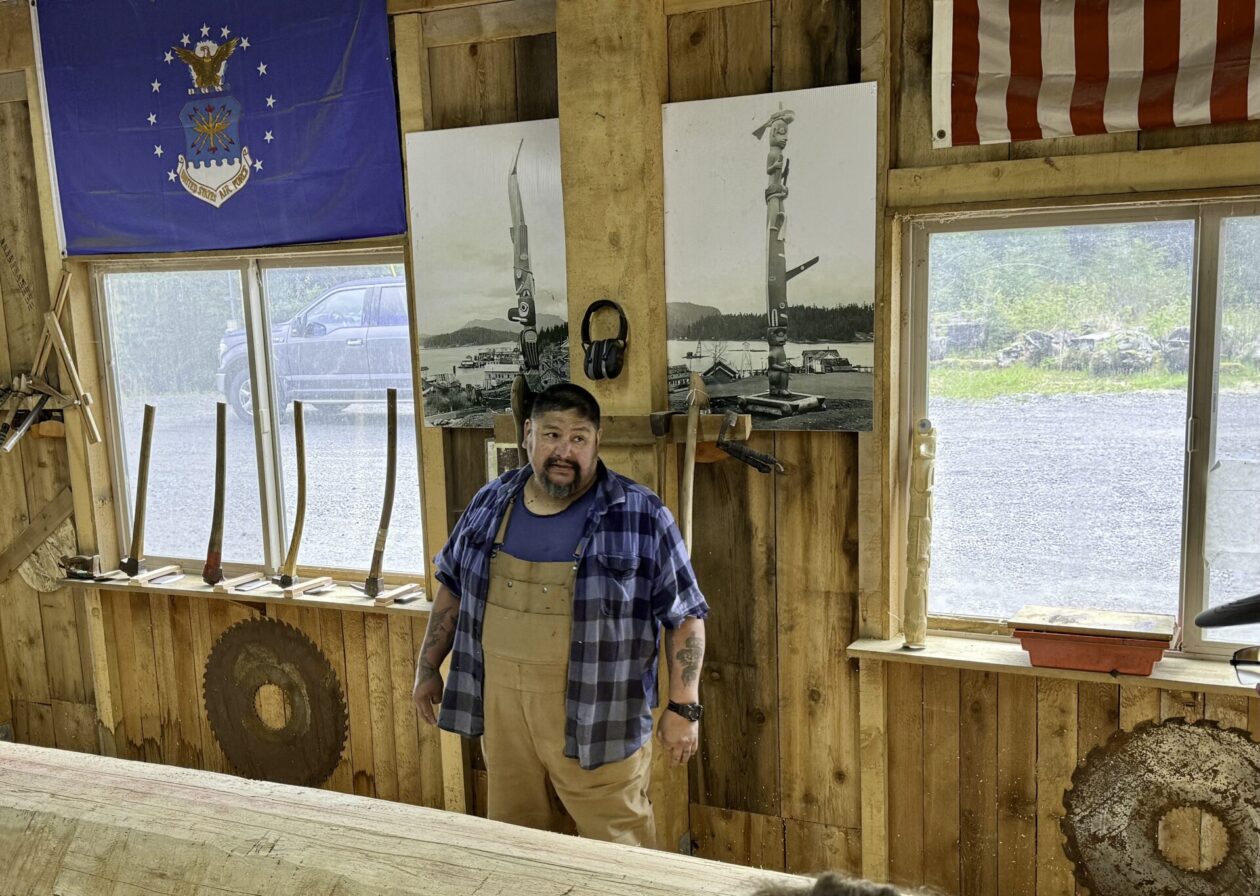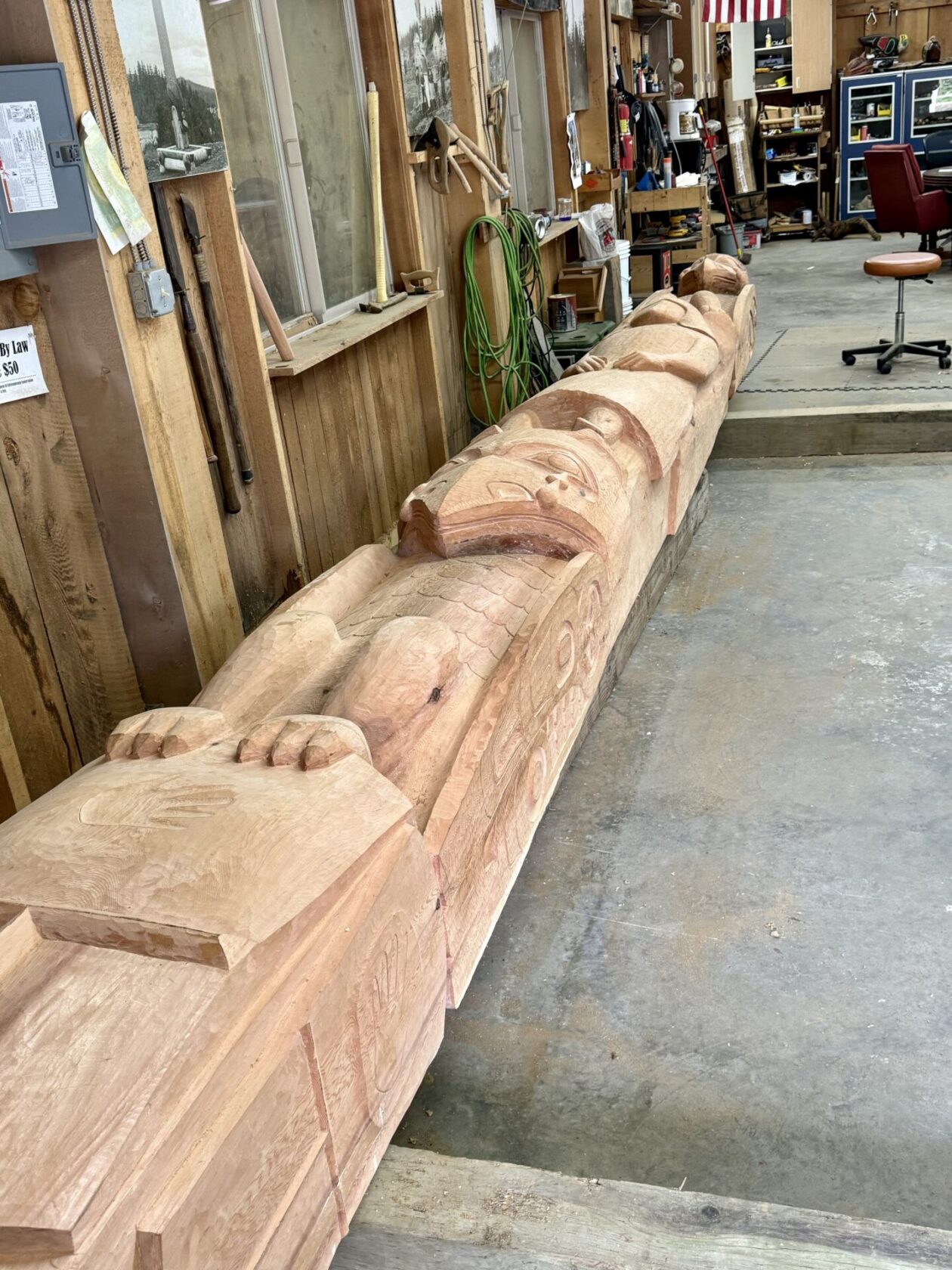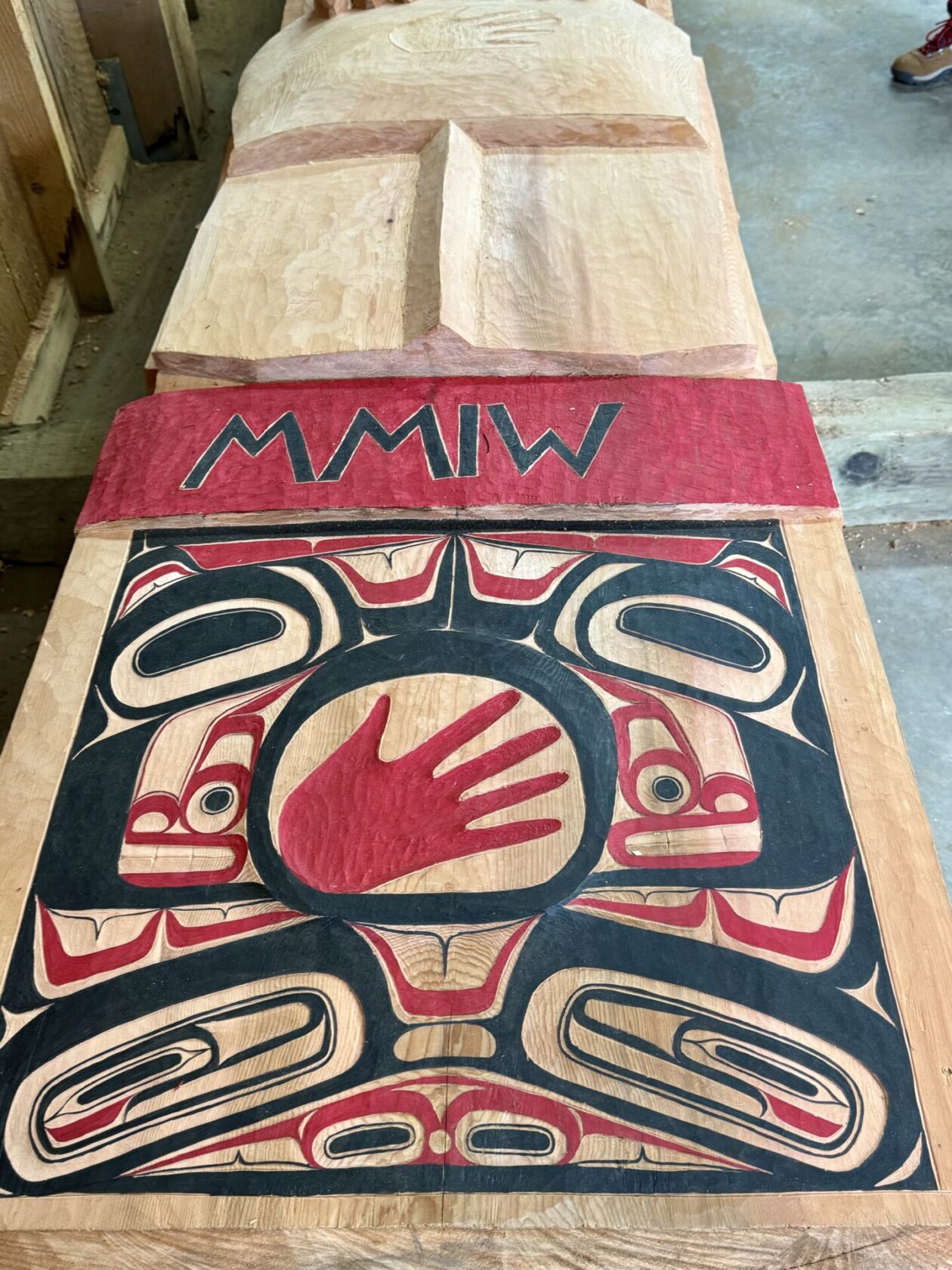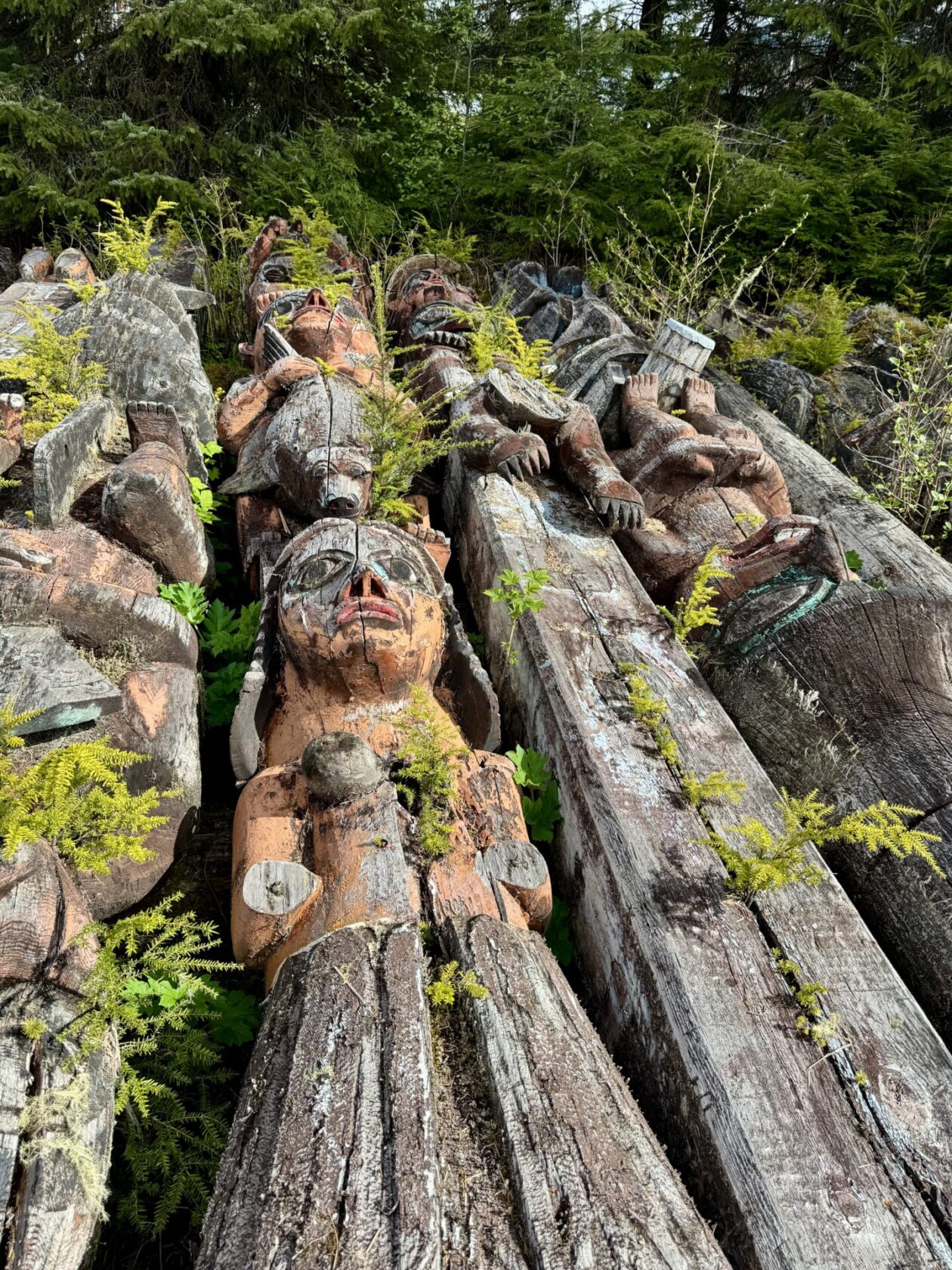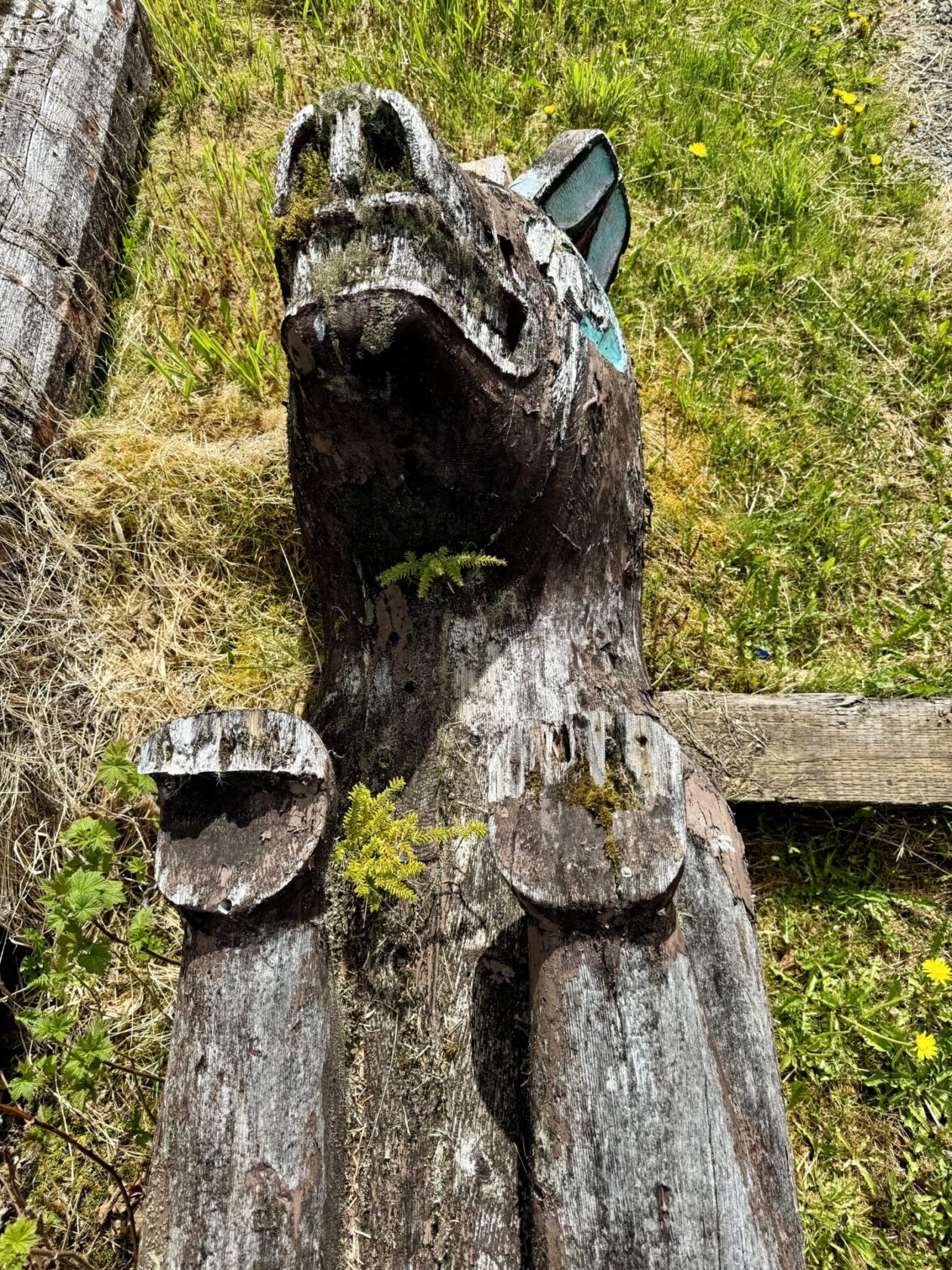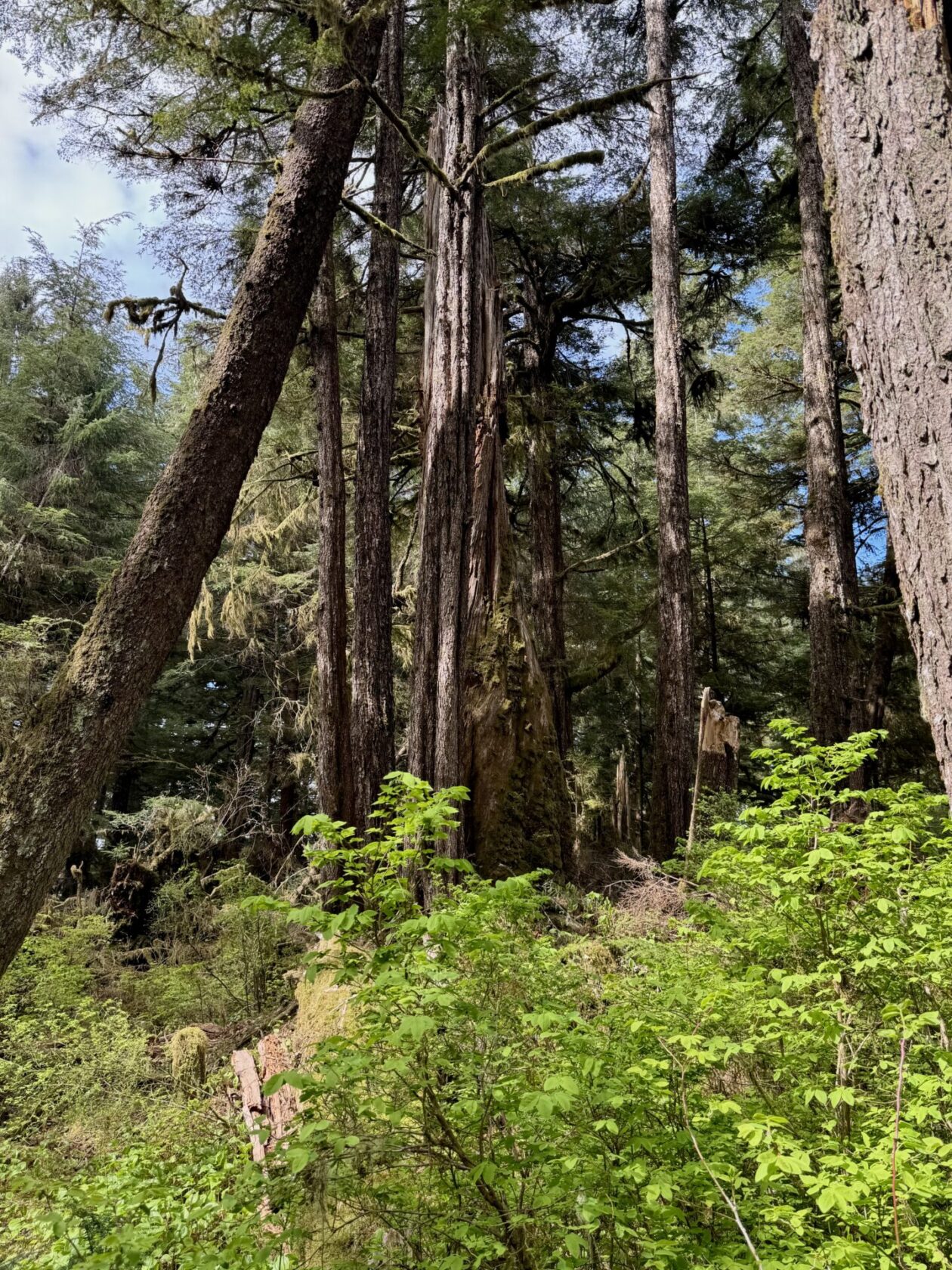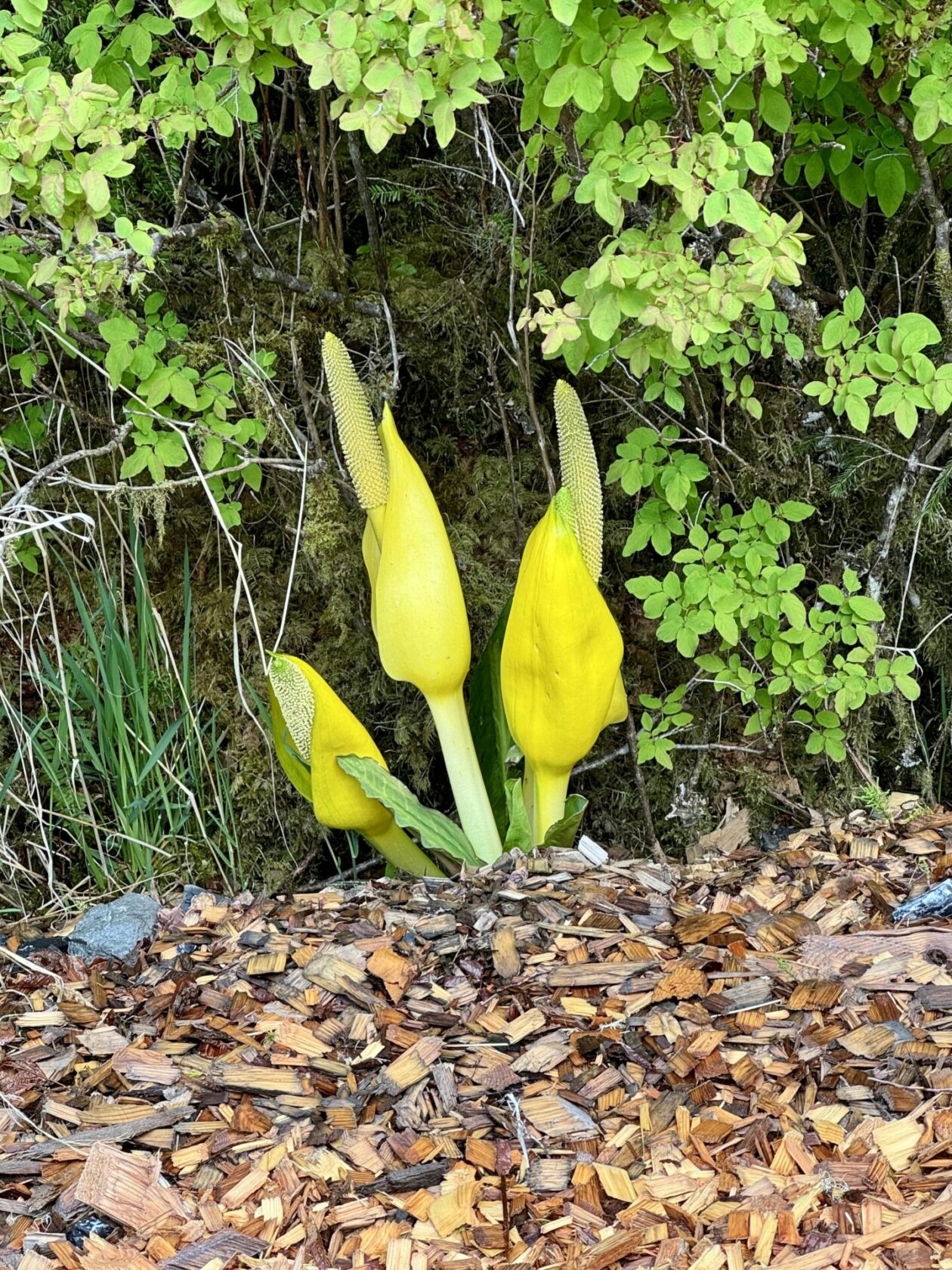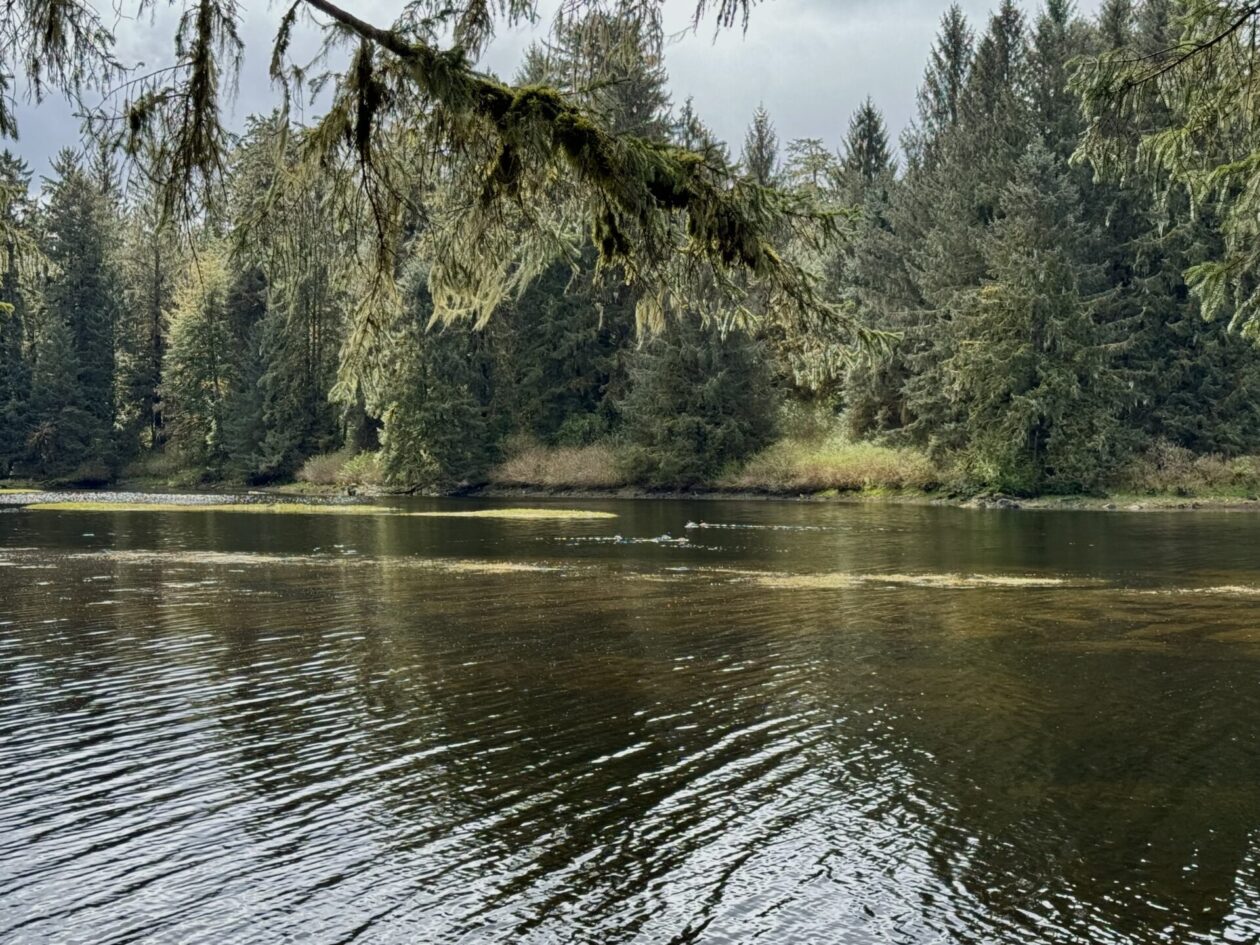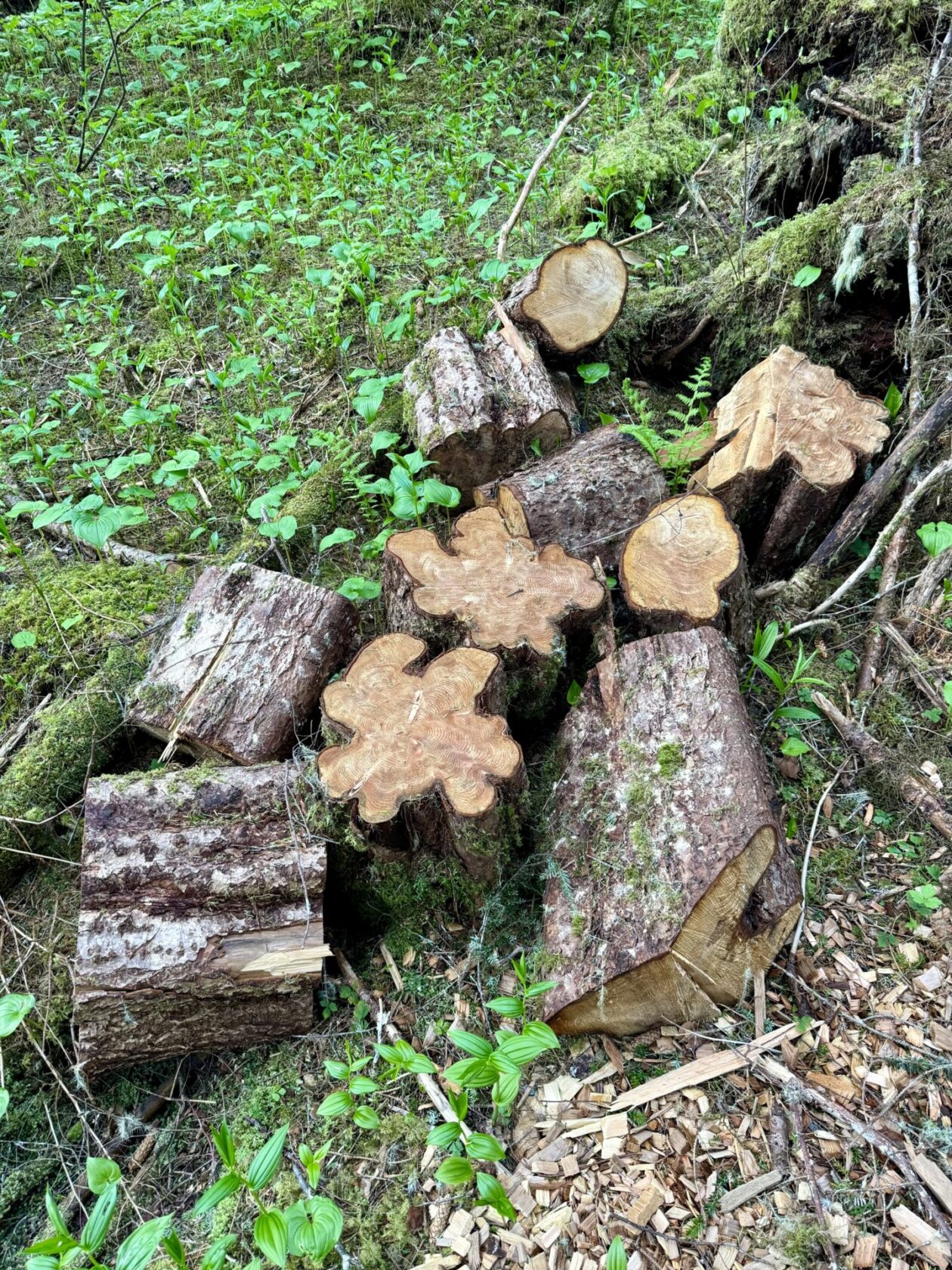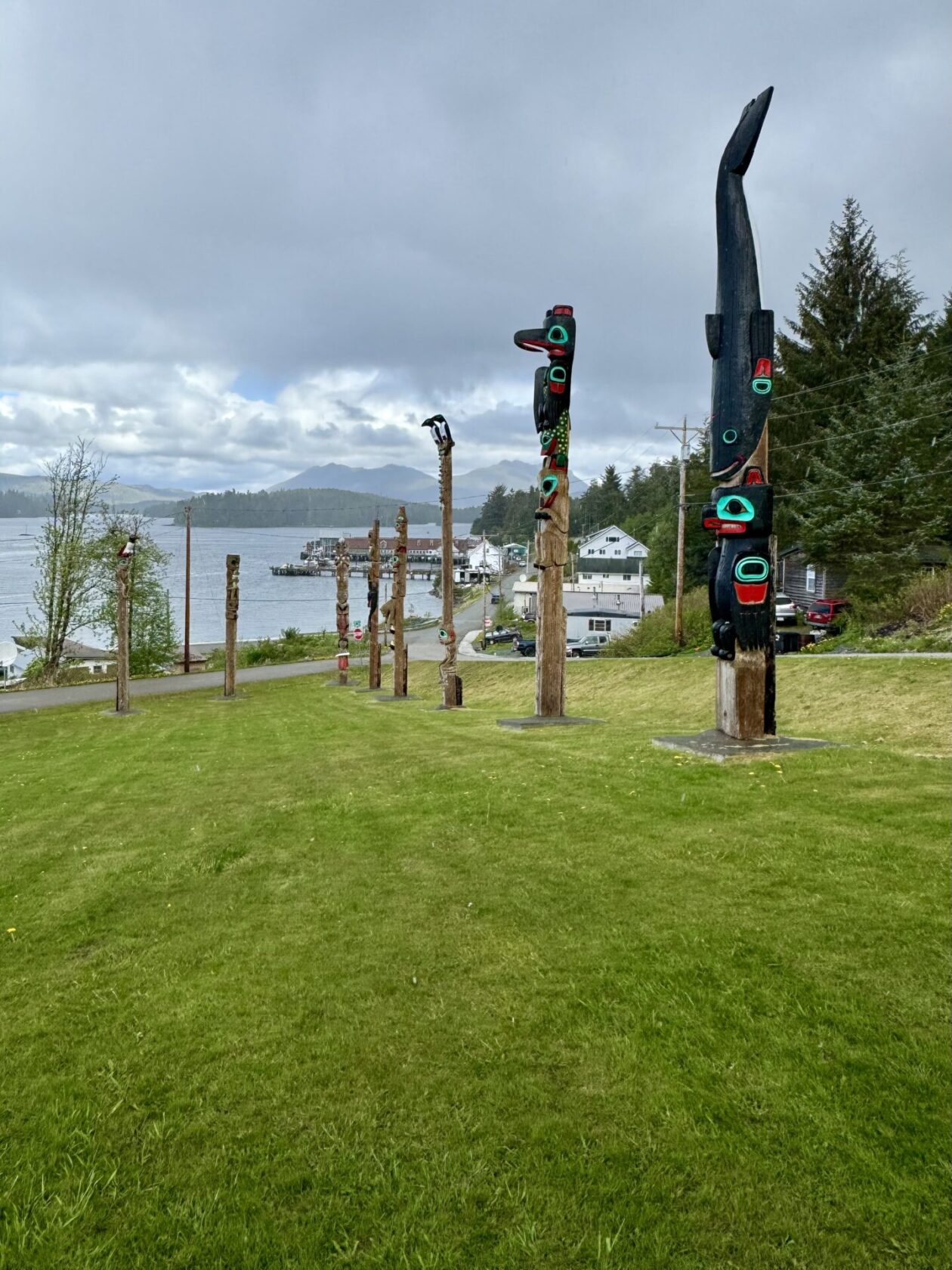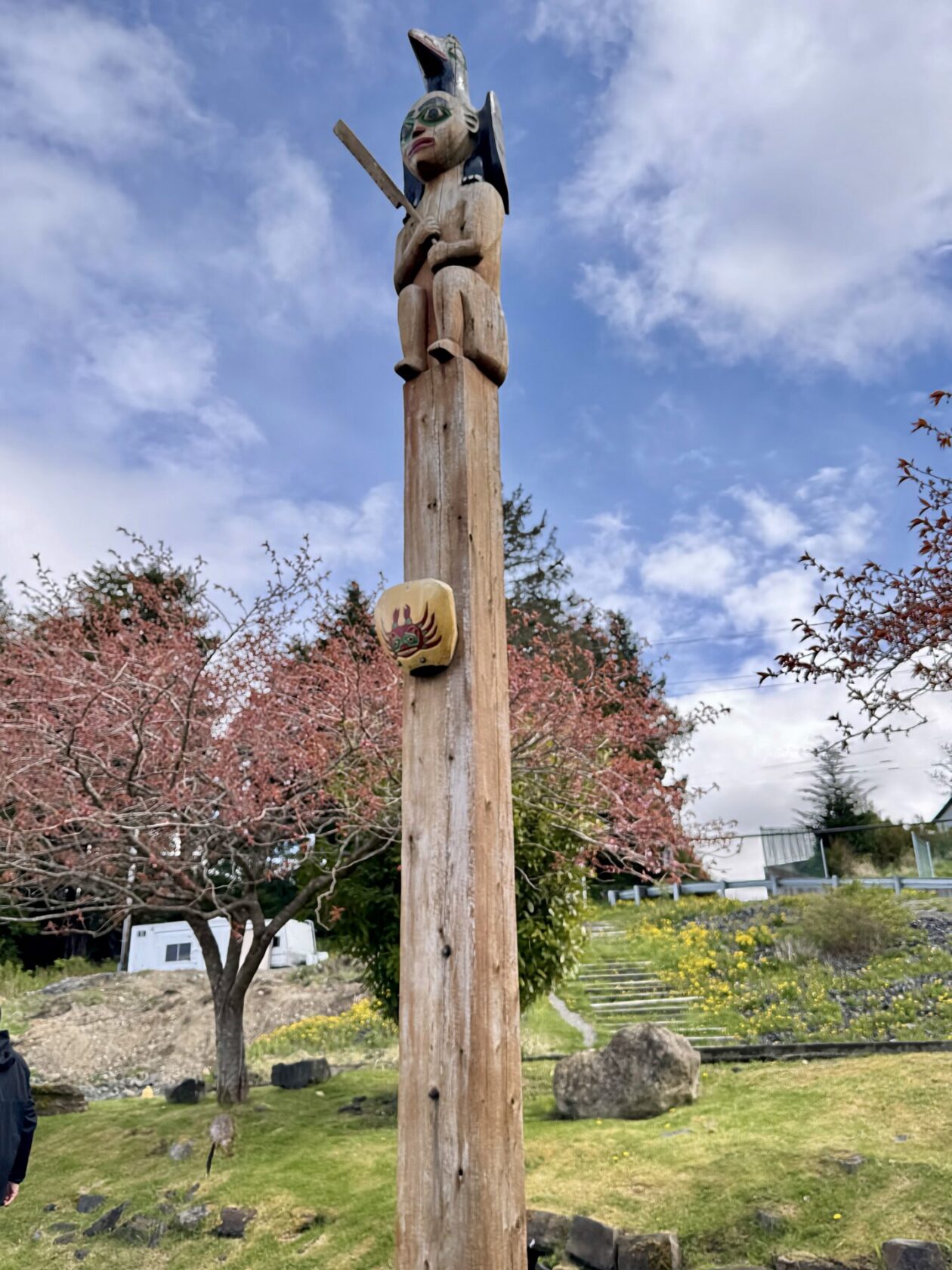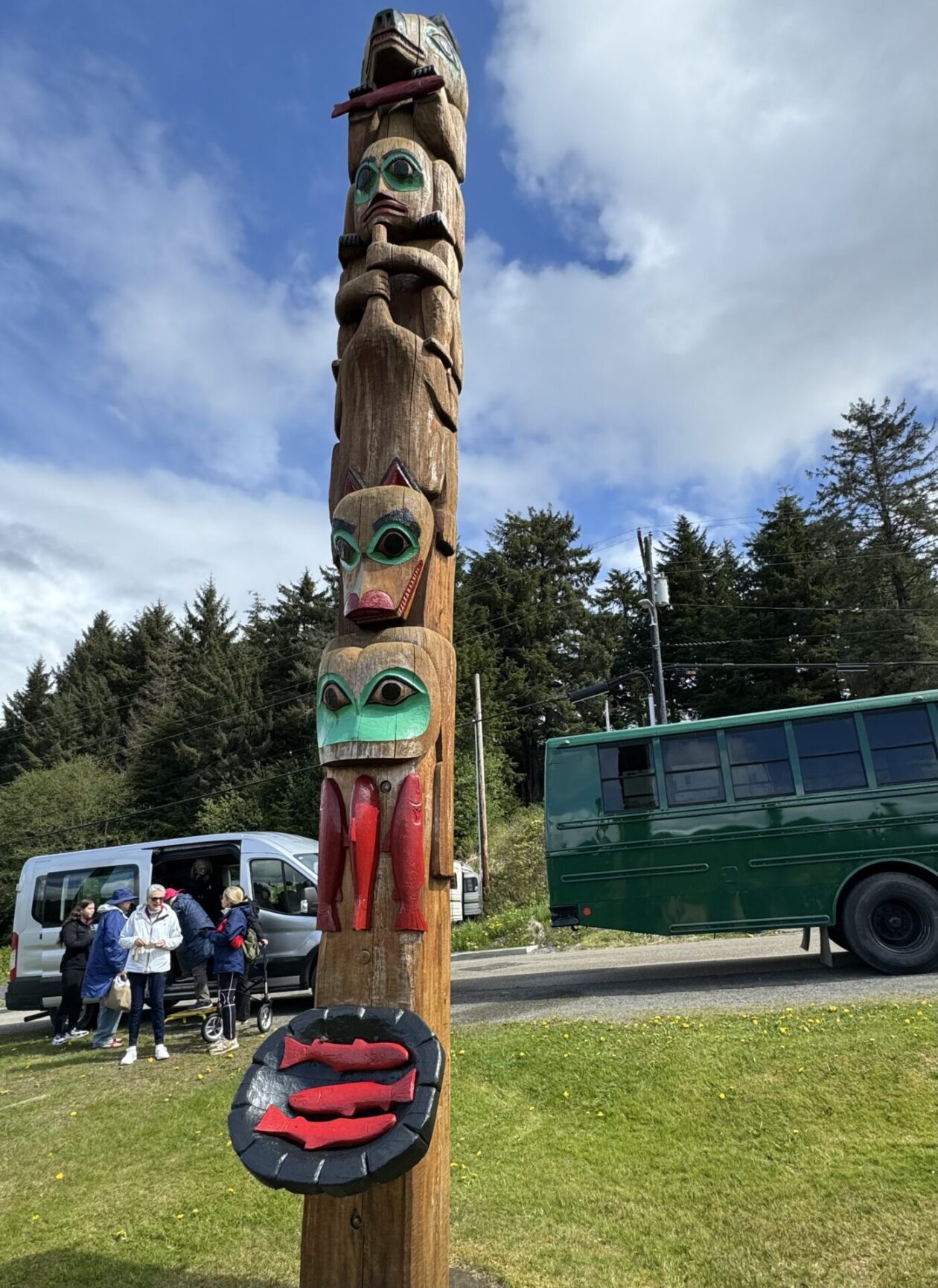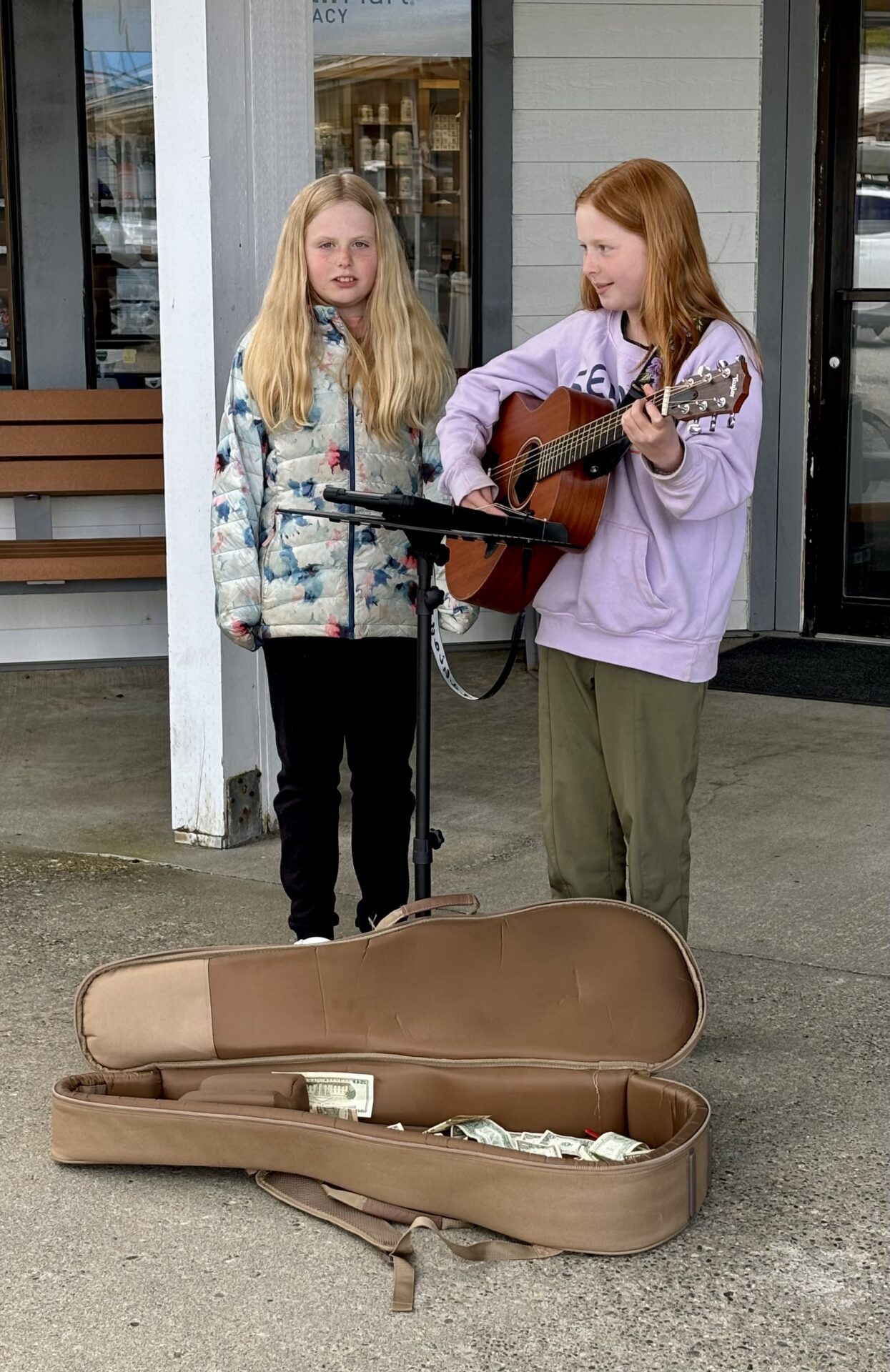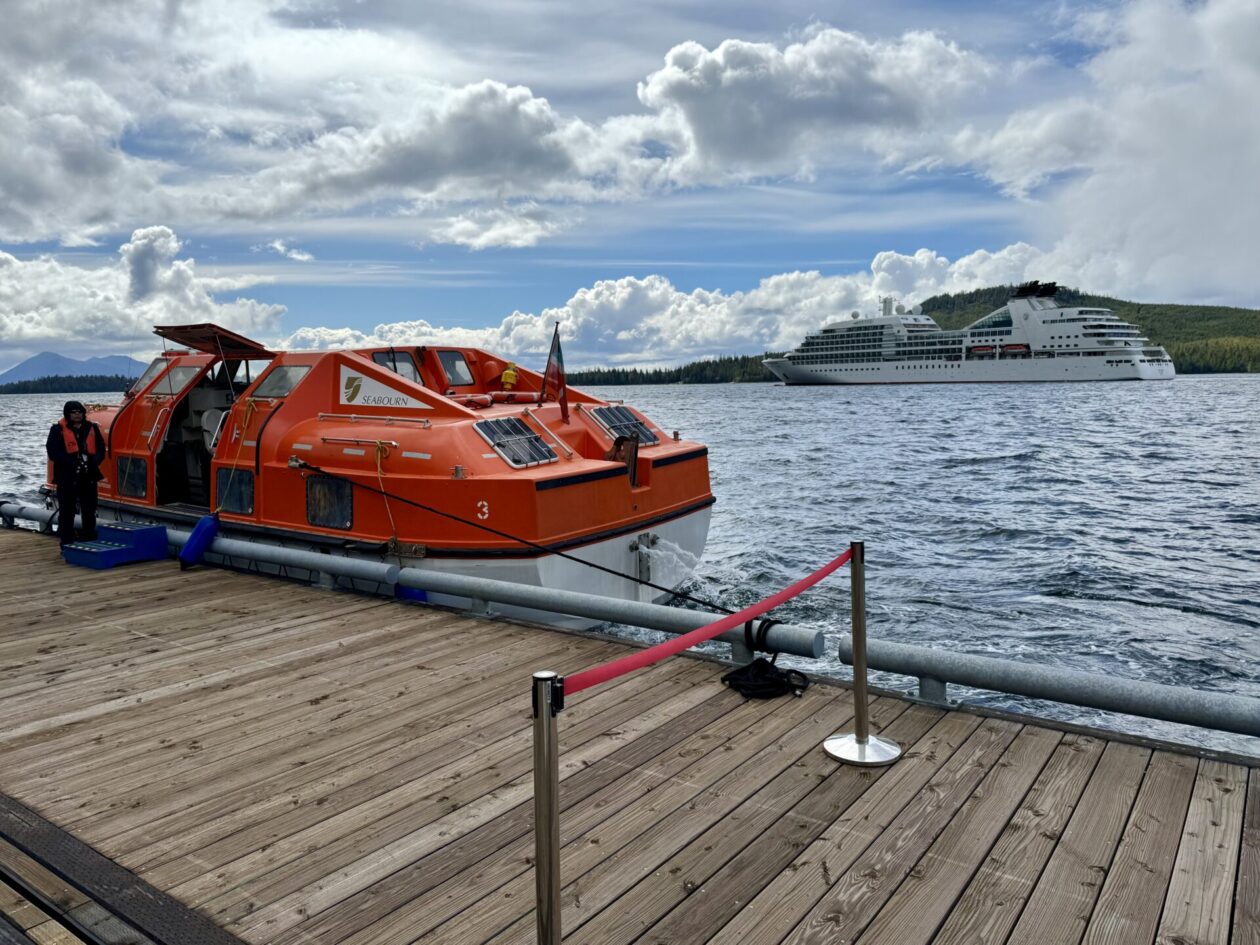- Northern Pacific Wanderings 2024 — here we go!
- Enjoying a few days in Hong Kong
- A day in Kaohsiung and Tainan, Taiwan
- A quick trip to the Penghu Islands
- Two Days in Taipei, Taiwan
- Naha, Okinawa
- Two days in Beijing
- Two days in Incheon and Seoul, South Korea
- Jeju Island, Korea
- Busan, Korea in a day!
- Nagasaki, Japan
- Arita, Japan
- Miyajima and Hiroshima, Japan
- Kyoto’s Bamboo Forest and Rock Garden
- Matsushima, Japan
- Hakadote, Japan
- Kushiro, Japan
- Dutch Harbor….er, Unalaska, Alaska
- Kodiak, AK
- Homer, AK
- Glacier Bay National Park and Preserve, AK
- Sitka, AK
- Klawock and Craig, AK
- A Nanaimo, BC, Canada drive by
- Vancouver BC, end of trip, and final thoughts
Today we participated in a historic first — the inauguration of a new cruise port. Located near the town of Klawock on the Pacific side of Prince of Wales Island, Port Klawok is joint venture between to Alaska native corporations and the Native village corporation of Klawock. As part of the project they included a floating tender dock, welcome facilities (currently in a large tent), and some retail therapy opportunities there. They also had some excursions with local guides and a shuttle bus to take people into Klawok and the adjacent community of Craig. Lots of dignitaries were on hand for our arrival and we truly felt welcomed. They are very committed to their culture and are now anxious to show it to the outside world.
Klawock itself was a summer fishing camp for the Tlingit that lived on Prince of Wales Island, but became the permanent home for the tribe when the area they had lived in was inundated with trappers. It became a big salmon fishing area and is known as the first salmon cannery in Alaska. It is known as a significant center of Tlingit culture. As such, it hosts a totem park with 21 poles that were masterfully crafted replicas of totem poles from the early 20th century. In fact, our first stop was to master carver Jon Rowan’s carving shed to learn how he (and his two apprentices) design and carve these enormous poles. If I’m not mistaken, Jon carved all the poles in the totem park and he is now working on two that will hopefully will be erected this summer. One of them is a commemorative pole for Missing and Murdered Indigenous Women (MMIW), a human rights crisis of violence against Indigenous women and girls in Canada and the US. Jon, an ex-Marine, was a straight talker and also a pretty funny guy. He gets his commissions from the village elders who either want replicas of previous poles or new ones he designs, like the MMIW one. Jokingly, he said that his wife wanted him to carve a pole for her family/clan and he told her that he would do it when she stopped pissing him off. That was 25 years ago… Next to the carving shed, sits the Totem Graveyard, full of old poles that are decomposing, part of the natural lifecycle of the poles. He has re-carved some of these already and will do more in the future. As we learned in Sitka, however, there is a changing attitude about preserving poles and he is now using a strong preservative on all his new poles. I was curious about that since the totem pole at our house has lost most of its paint and it beginning to decay.
From there we took a short nature hike on one of the traditional animal trails to learn about native uses of the plants that grew there. There is so much respect for the land an individual (John Dara (sp?)) was assigned to maintain these animal trails to make it easy for them to get around. The trail is over 30 miles long and extends up into the mountains.
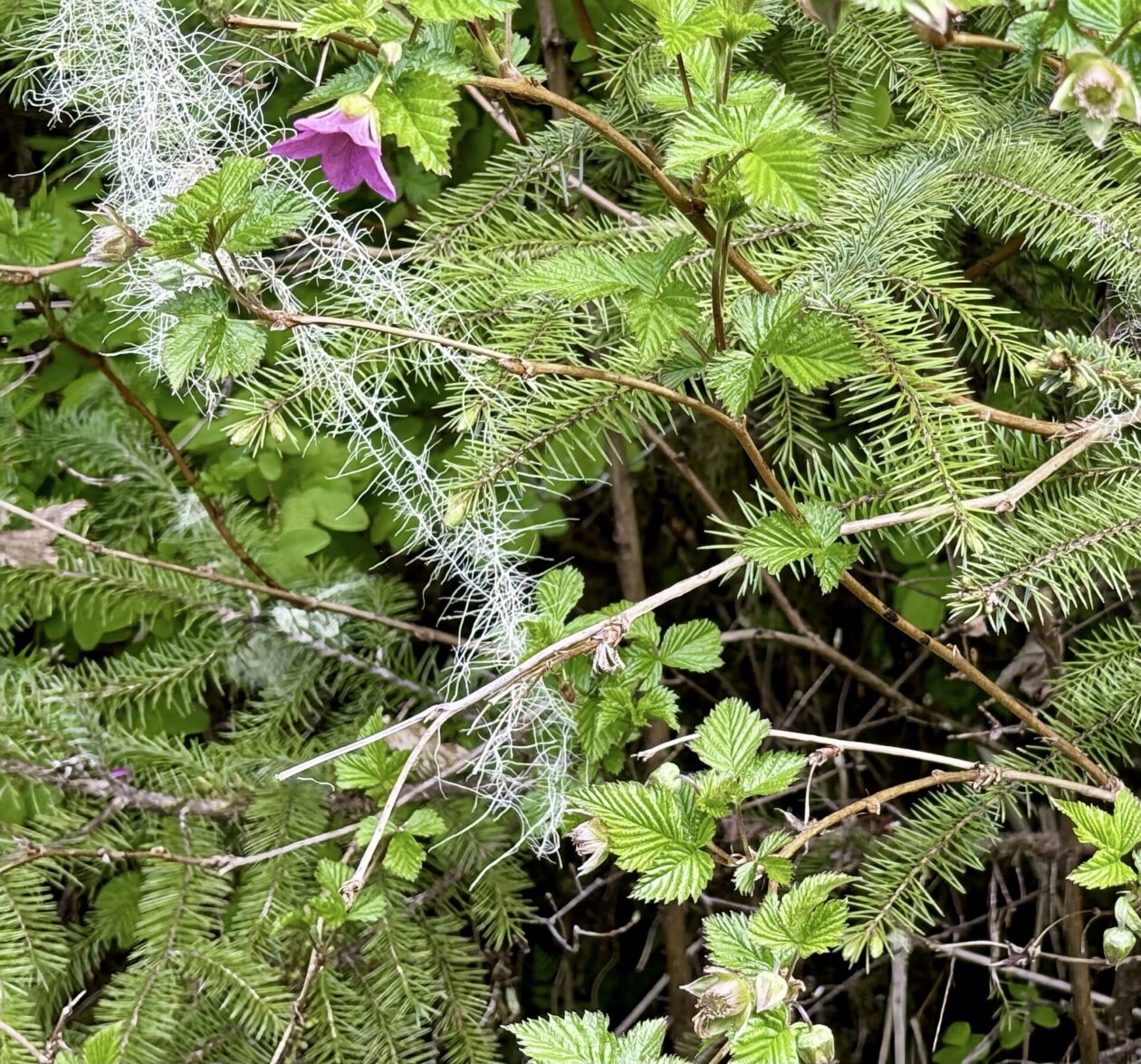
At that point, we visited the totem park. It was originally developed between 1938 and 1940 as a Civilian Conservation Corps project. The CCC selected 21 poles out of approximately 142 Tlingit and Haida totems that were originally located in the village of Tuxekan. It has the largest collection of authentic totem poles in Alaska, including original and replica totems. Sitting on a hill overlooking the town’s cannery and harbor, it is a great source of pride for the community. Our guide spent time going over the meaning of each of the poles. As in the Sitka poles, each had different purposes (e.g., mortuary, land claims, recording history, teaching lessons). Each of the stories was really interesting.
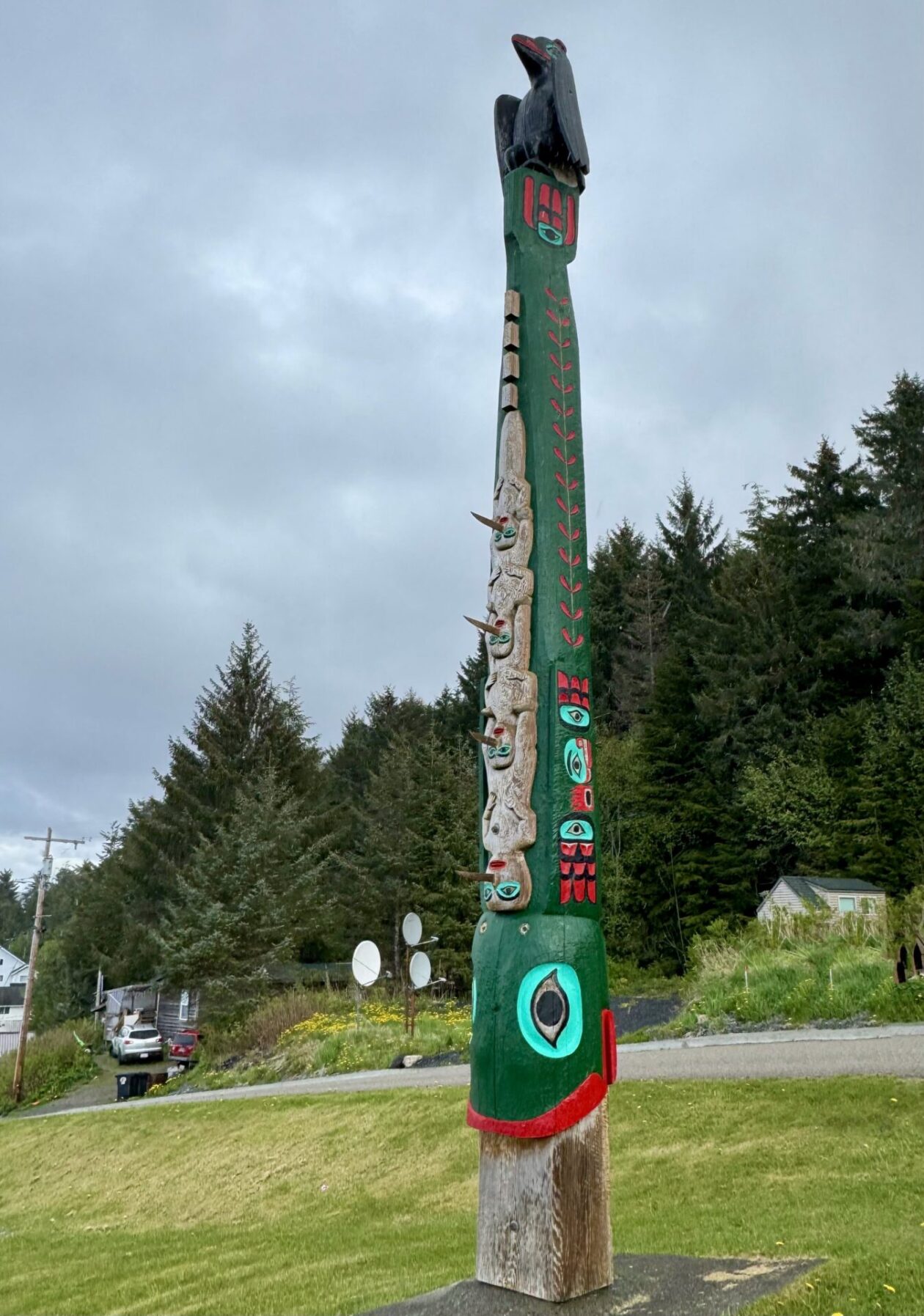
From there, we took the shuttle bus and visited both the towns of Klawock and Craig. What was really great to see was the creation of two new craft markets that showcased the arts, crafts, and local foods of the area. It was opening day for each of these and everyone (crafts people, locals, and us) were very excited about this new showcase for the island’s bounty. We also went searching for spruce tip beer, but that is a whole different story. Then it was back to the port and on to the ship.
Tomorrow we arrive in Ketchikan.
This entry was posted in Alaska, Cruising, Klalock, National Park/Monument, Travel, United States